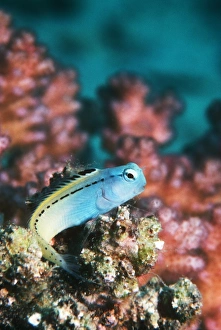Batesian Mimicry Collection
Discover the fascinating world of Batesian mimicry, named after the brilliant British naturalist Henry Walter Bates (C016/5866
All Professionally Made to Order for Quick Shipping
Discover the fascinating world of Batesian mimicry, named after the brilliant British naturalist Henry Walter Bates (C016/5866). This intriguing phenomenon involves non-venomous or less threatening species, like the juvenile blacksaddle filefish, resembling their more dangerous counterparts to deter predators. For instance, the bee fly and hoverfly mimic the menacing wasp, while the red Sea mimic blenny resembles the venomous lionfish. The Attacus atlas moth exhibits incipient mimicry, with its green form resembling a toxic leaf. This 1797 illustration of the Atlas Moth (C013/6441) showcases the stunning similarity. Even the juvenile sweetlips display a striking resemblance to other species, adding another layer to the complex web of nature's deception.








